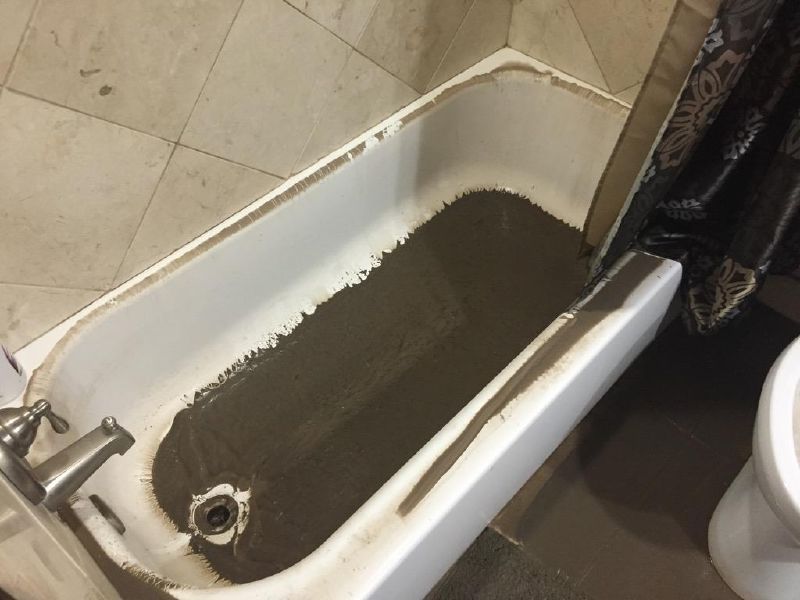The content below involving What To Do If Sewage Starts Backing Up Into the Shower is absolutely interesting. Don't miss it.

Sewer backup in the bathtub can be an upsetting and unsanitary problem for any type of house owner. Not only is it inconvenient, but it also poses significant health risks and suggests underlying issues with the plumbing system. Recognizing why sewage is coming up through the bath tub is vital for taking appropriate activity to resolve the problem successfully.
Introduction to the Concern
Usual Reasons for Sewer Back-up
Clogs in the Drain Line
One of the most typical causes of sewer backup is a clog in the drain line. This can happen because of the accumulation of particles, oil, or international items in the pipelines, stopping appropriate flow and triggering sewage to support into your tub.
Tree Root Breach
Tree roots looking for wetness and nutrients can infiltrate sewer lines through tiny cracks or joints. Gradually, these origins can grow and increase, causing significant damages to the pipelines and resulting in sewer back-up concerns.
Recognizing the Issue
When sewage starts backing up right into the tub, it's a clear indication of a problem with the water drainage system. The wastewater that needs to be streaming away from your home is instead discovering its back right into your living space, which can cause considerable damages and carcinogen.
Potential Causes
Numerous variables can add to sewer backup in the bathtub. From clogs in the sewer line to problems with the plumbing framework, determining the source is crucial for locating a remedy.
Aging Facilities
Older homes might have obsoleted plumbing systems that are much more susceptible to deterioration, fractures, and damage. As pipelines age, they end up being much more prone to leaks and blockages, raising the probability of sewer backup cases.
Heavy Rainfall or Flooding
Throughout durations of heavy rainfall or flooding, the sewer system might end up being overwhelmed with excess water, creating backups and overflows. This can result in sewage supporting into tubs and other components inside the home.
Signs of Sewer Backup
Foul Odors
Undesirable odors originating from drains or components, especially in the bathroom, may suggest sewage back-up problems. These smells are often solid and persistent, signaling an issue that requires immediate attention.
Slow Draining Fixtures
Tubs, sinks, and bathrooms that drain slowly or otherwise whatsoever could be experiencing sewer backup. If several fixtures are affected simultaneously, it's most likely that the concern stems from a typical factor, such as the main sewer line.
Gurgling Noises
Odd gurgling or bubbling sounds originating from drains pipes when water is running in other places in the house are a measure of air entraped in the plumbing system. This air build-up can arise from sewage backup and need to be explored immediately.
Health Risks Connected With Sewage Backup
Contamination of Water Supply
Sewage back-up can infect the water supply in your home, positioning a major health risk to you and your family. Exposure to contaminated water can result in stomach problems, skin infections, and other health problems.
Mold and mildew Development
Wetness from sewage back-up can develop suitable conditions for mold development in your home. Mold and mildew spores can intensify respiratory problems and trigger allergies in delicate people, making punctual clean-up crucial.
Spread of Condition
Sewage consists of harmful bacteria, viruses, and bloodsuckers that can trigger a variety of diseases, consisting of hepatitis, cholera, and gastroenteritis. Entering into contact with sewage or polluted surfaces places you in jeopardy of infection.
Tidying up After Sewer Backup
Sanitation Procedures
Extensively sanitize and sanitize affected locations after sewer backup to eliminate harmful microorganisms and avoid mold and mildew growth. Use ideal cleansing products and protective gear to make sure secure and efficient clean-up.
Repair of Influenced Areas
Fix any type of damage to flooring, wall surfaces, or fixtures brought on by sewage backup. Relying on the degree of the damages, you may need to change carpeting, drywall, or various other materials to restore your home to its pre-loss condition.
Immediate Actions to Take
Switching Off Supply Of Water
In case of sewage backup, it's important to switch off the supply of water to prevent additional contamination and damage. Situate the main water shutoff valve in your home and shut it off until the issue can be settled.
Contacting a Professional Plumber
Managing sewer backup is not a DIY job. Get in touch with an accredited plumber with experience in handling sewage-related problems to evaluate the circumstance and do necessary repair work or cleanings.
Avoiding Contact with Infected Water
Until the sewer back-up is dealt with, prevent contact with infected water to avoid the spread of bacteria and virus. Use protective equipment if you must be in the affected location and wash your hands extensively later.
Preventive Measures
Routine Upkeep of Sewer Lines
Arrange routine inspections and maintenance of your sewer lines to determine and resolve possible concerns before they rise into significant problems. This can consist of cleaning debris, evaluating for tree origin intrusion, and repairing any kind of damaged pipelines.
Installing Bayou Valves
Take into consideration setting up backwater shutoffs in your plumbing system to avoid sewage from flowing back right into your home during periods of heavy rainfall or flooding. These valves automatically close when water draws back up, securing your residential property from contamination.
Appropriate Disposal of Family Waste
Stay clear of flushing anything apart from bathroom tissue and human waste down the toilet to stop blockages and obstructions in the drain line. Dispose of grease, oil, and other family chemicals effectively to minimize the danger of plumbing issues.
Why Is Water Backing Up in My Bathtub When I Flush My Toilet?
What to do about a sewer line clog
First, don’t bother with plunging. No amount of plunging will dislodge the clog in a sewer line. The clog is too far away. Plungers are for clogs in the toilet itself, not the sewer line. Plus, the most likely causes of a sewer clog are:
Tree roots Flushed toys or feminine products Grease buildup Those items don’t move easily. And in the case of tree roots, the roots need to be cut out of the pipe and the pipe will need to be repaired.
You’ll need a closet auger. A closet auger is a type of plumber’s snake with a protective cover to keep from scratching the delicate porcelain toilet. If the clog is further down, you may need to remove the toilet or use one of your cleanouts to get to the clog.
We also recommend doing a video inspection of the drain to ensure that the cause of the clog has been completely removed. Otherwise, you could have the same problem again in a few days or weeks.
https://mspplumbingheatingair.com/blog/why-is-water-backing-up-in-my-bathtub-when-i-flush-my-toilet

As a keen person who reads on Water Coming up Bathtub Drain, I was thinking sharing that segment was a great idea. Sharing is nice. You just don't know, you will be doing someone a favor. I praise you for being here. Please visit our website back soon.
Check Us Out